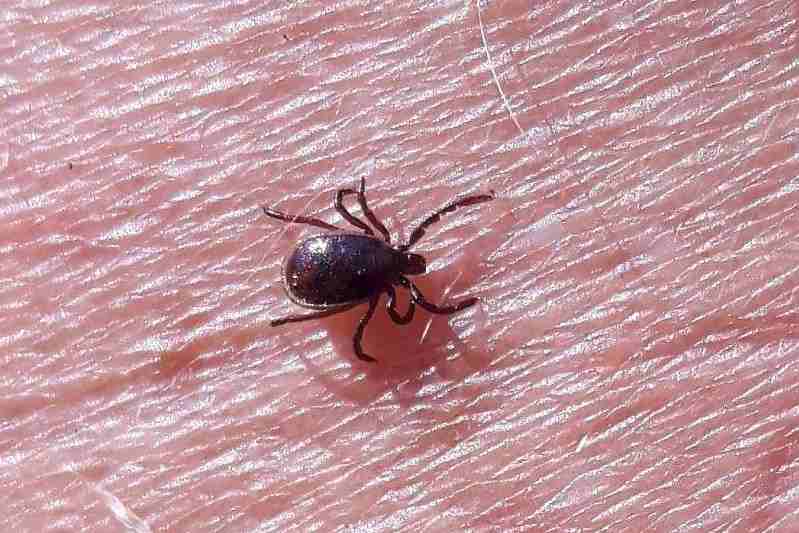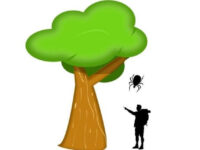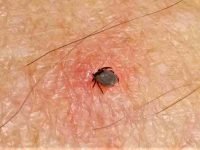Ticks are very common, and many of us have encountered these little 8-legged creatures at some point in our lives. Ticks with their eight legs belong to the group (class) of spiders and not to the insects which have only six legs. They are ectoparasites, which means they live outside the body and feed on the blood of mammals, birds, and even reptiles and amphibians. Ticks are found in all climates except the arctic and are particularly common in warm and humid areas.
There are two types of ticks, hard and soft ticks. Hard ticks have a beak-like structure on the side of their head that contains the mouth part, while soft ticks have their mouthparts on the underside of their body.
Are Tick Bites Dangerous?
Most of the tick bites are harmless. The bite is actually a little puncture wound into which the tick locks its feeding apparatus to feed on blood. They can be tiny in size and might go unnoticed or you may consider these creatures on your skin as a freckle or a dirt particle until it has grown in size.
Ticks, unlike other biting insects, don’t bite you and go on with their routines. A tick bite actually lasts a couple of days, during which the tick is feeding on your blood until it is full. Only when it is full, will it drop off by itself.
If you’re sensitive, you might end up going through an allergic reaction that can include pain, swelling, a rash, and a burning sensation at the bite site. The small wound can also become infected if dirt gets inside.
The great danger of a tick bite is that these small animals often carry dangerous pathogens that can be transmitted to the host. These pathogens can cause dangerous diseases that can even kill a person.
The longer a tick remains unnoticed during its blood meal, the greater the risk of pathogens being transmitted. This is why it is so important to remove a tick as soon as possible.
Ticks Can Transmit Diseases
Ticks, along with mosquitoes, are among the most dangerous disease carriers and infect thousands of people every year. The suffering that can be caused by the diseases they transmit should not be underestimated.
Most Common Tick-borne Diseases Are
- Lyme disease: It is one of the most common tick-borne diseases. Lyme disease is caused by the bite of a tick belonging to the genus Ixodes. It is most of the time caused by the bite of a nymph rather than an adult tick. The bacterium behind the infection is Borrelia.
- Rocky Mountain Spotted Fever: It is caused by Rickettsia Rickettsii that is transmitted via tick bites. The characteristic finding is a petechial rash that starts on the ankles and the wrists.
- Tularemia: Tularemia is transmitted through tick bites and is an infectious disease caused by Francisella Tularensis.
- Babesiosis: It is a Malaria-like parasitic disease that is caused by the parasite Babesia and is transmitted via tick bites.
- Ehrlichiosis: This is a tick-borne bacterial infection in which the white blood cells are killed by the bacteria.
Anaplasmosis: Anaplasmosis is an infectious disease caused by a rickettsial parasite that is transmitted through tick-bites. - Relapsing Fever: It is a tick-borne disease that spreads through the bite of a soft-bodied tick. It is caused by the bacterium Borrelia burgdorferi.
- Q Fever: Query fever is caused by the bacterium Coxella burnettii and is occasionally transmitted to humans through ticks.
- Tick-borne Encephalitis: It is a viral tick-borne disease in which the ruminants and dogs serve as the primary source of the virus which is then transmitted to humans. It affects the central nervous system.
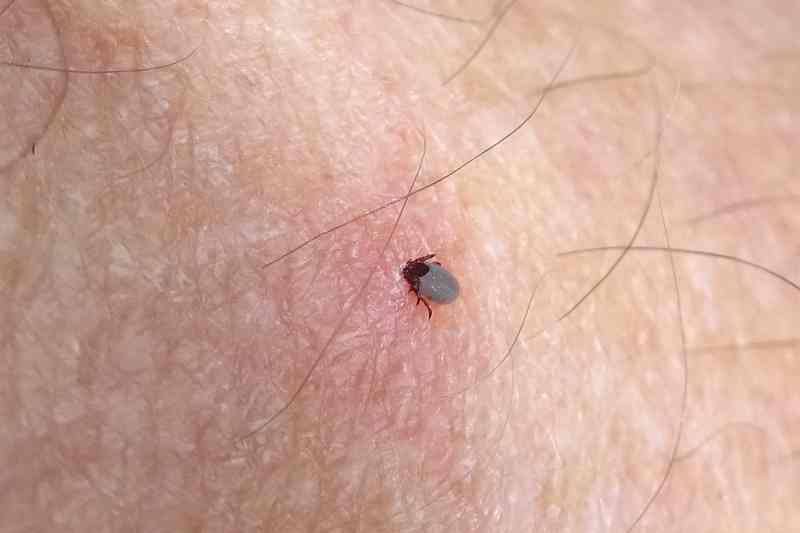
How to Identify a Tick Bite?
The ticks stay attached to your skins and feed on blood for several days. Some ticks are very minute in size even the size of a pinhead that they may go unnoticed. As they suck blood, they get bigger and bigger, engorged with blood, this way it becomes easier to notice them.
Ticks most commonly bite in moist and warm areas of the body like underarms, groin, behind the knees, inside the belly button, and scalp. Check your body thoroughly and do not miss any brown or black spots as it can be a tick with its head burrowed in you.
Now, if you get a tick-bite, what to do next?
Tick bites can be dangerous. The longer the tick has been feeding, the higher the risk that it could transmit diseases. When you notice a tick bite, it is most important to remove the tick as quickly as possible. Use proper tools to remove the tick without squeezing the tick.
Once the tick is out, have a proper lock at it to see if it is complete. To often the mouthparts break of and remain in the skin, also inspect the site if anything is still stuck in it. You might keep the tick in a sealed container to show it to your doctor later if necessary. After successful tick removal, clean the wound and keep on watching it for the next few days. In most cases, the bite site heals without any problems.
However, it is important to closely monitor the bite site for complications and also to monitor the general condition and health in the next one to two weeks. Symptoms of tick-transmitted diseases show after a few days to two weeks. If any symptoms show, see you, doctor. If Lyme disease is common where you live or you feel there is any risk of being sick, go and see your doctor.
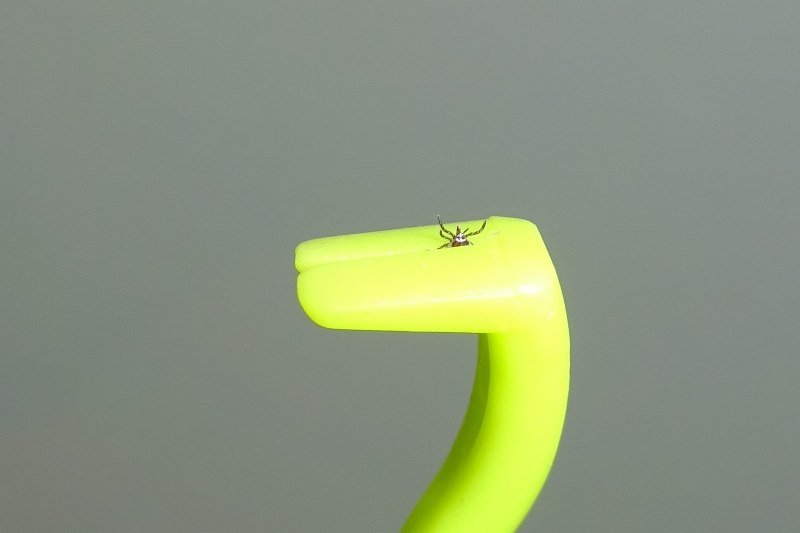
Signs of Complication after Tick bites
Usually, there are no complications after a tick bite, but if you’re having an allergic reaction to the bite, then the following signs can occur:
- Burning sensation
- Itching
- Pain
- A rash
- Blisters
- Dyspnea in extreme situations
But there are other complications that can be triggered by a tick bite besides an allergic reaction. Since ticks carry pathogens in their intestines, there is a risk that various tick-borne diseases can be transmitted by a tick bite.
Now the question arises what signs let you know that it is a Tick-borne disease?
The tick-borne diseases have rather complicated signs and symptoms that develop from several days to a few weeks. These symptoms might include
- Fever
- Rash
- Body aches
- Joint and muscle aches
- Central nervous system signs and symptoms
- Weakness and fatigue
- Nausea and vomiting
- Malaise
- Neck stiffness
A rash that occurs a few days after a tick bite can be a symptom of tick-borne diseases, especially for the below tick-borne diseases
- Lyme Disease: it has got the bull’s eye rash that is explained later in this article.
- Tularemia: In Tularemia, there is an ulcer at the bite site.
- Rocky Mountain Spotted Fever: A petechial rash that starts on the ankles and the wrists is characteristic of RMSF.
- Ehrlichiosis: In 30 percent of the patients, there is a presentation of rashes that can vary in their appearances.
Most common Tick-borne disease – Lyme Disease
In areas where Lyme disease is common, you should always consider the possibility of getting it after a tick bite.
Early detection is the key to prevent more severe complications in Lyme disease. Early signs of Lyme disease include a headache, body and joint pains, fever, and a distinctive bull’s eye rash.
Bull’s eye rash is the characteristic rash of this disease that appears as a large oval spot anywhere on the body. It has a central red spot surrounded by a clear area that is further surrounded by a red oval forming a bull’s eye pattern.
Even if you don’t see any symptoms, you still should get yourself checked for this disease as it can affect your heart, joints, and central nervous system in later stages and can even prove fatal if not treated in its early stages.
As the disease progresses, the prognosis becomes poor, and it becomes more and more difficult to treat it.
When to See a Doctor
So, when do you need to see a doctor? In areas where tick-borne diseases are quite common, you need to rule out the possibilities of getting infected and get yourself checked after a tick bite.
Also, if you experience any severe symptoms or peculiar rashes after the tick bite, you need to consult a physician immediately who can take your detailed history and analyze your signs and symptoms to make sure that you’re fine.
So How Dangerous Are Tick Bites?
Most of the time, tick bites are harmless. Unfortunately not always! To be on the safe side, it is important to watch the wound closely and to pay attention to any signs or symptoms. If any complications arise see your health care professional.
To avoid these complications with tick bites, you should try to give the ticks as little opportunity as possible. Take precautions for home and garden to control tick numbers. Protect your pets and regularly inspect them for tick investigation. When walking in nature or good to areas where ticks can be expected, use suitable tick protection and tick repellents.
